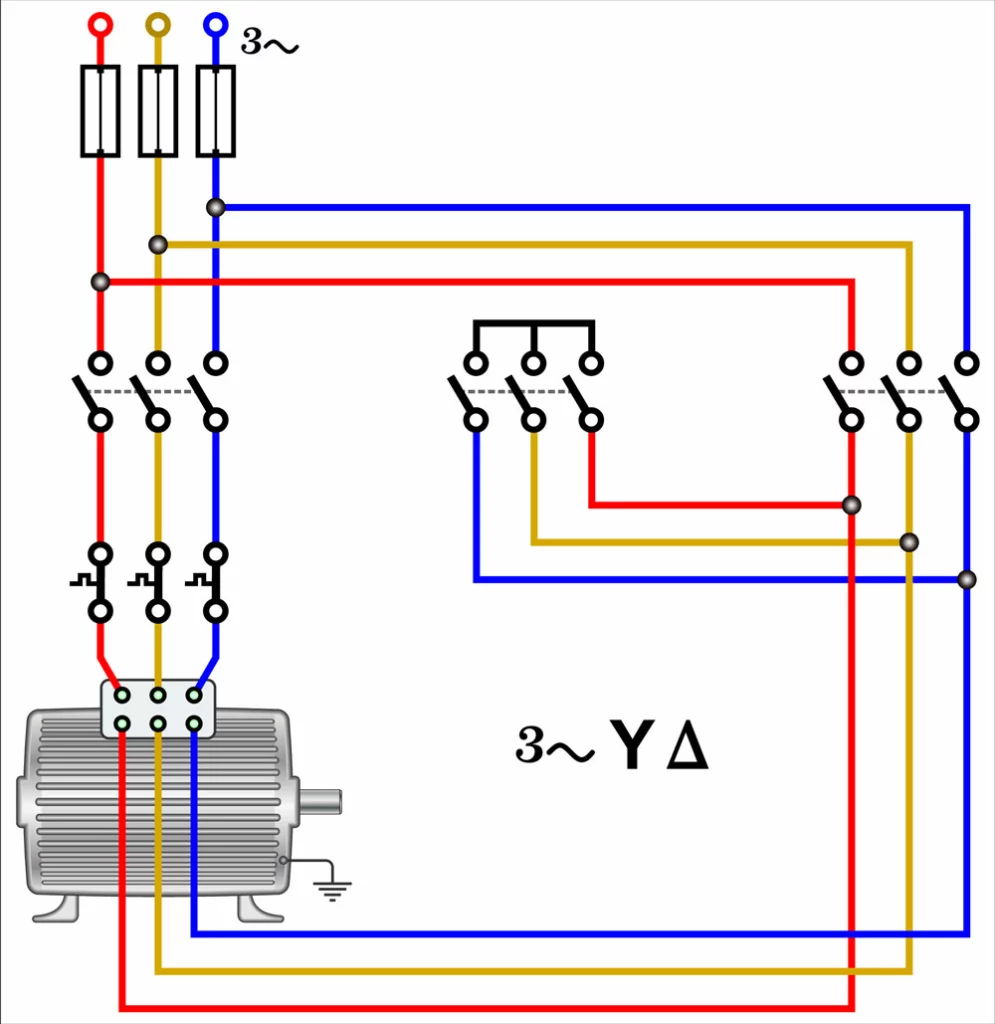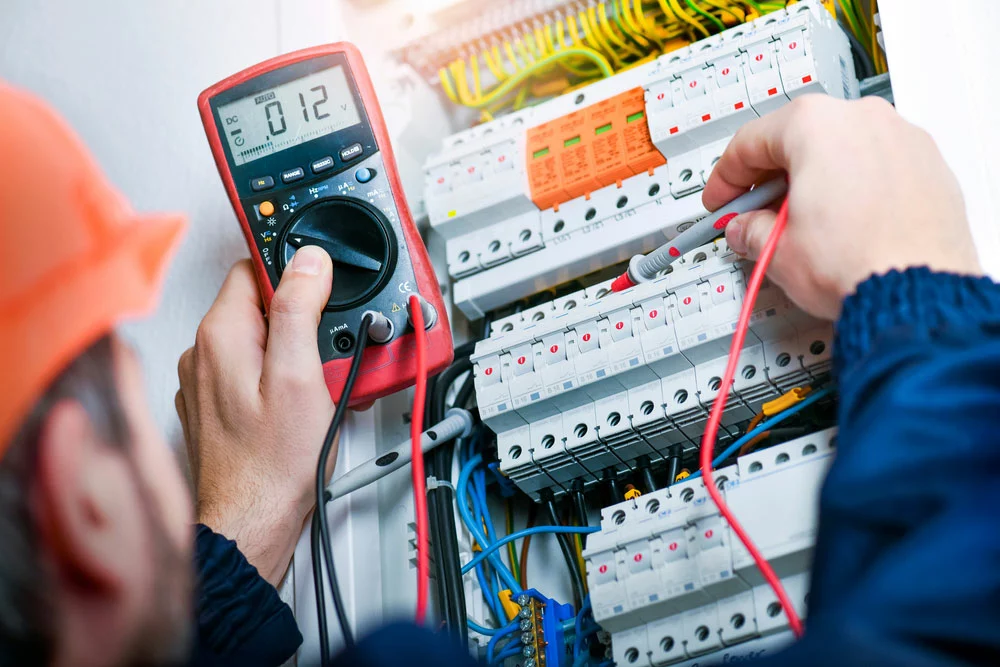Electrical energy is the basis of the operation of all electrical appliances. But, while some individual appliances use electricity to produce light, others use it to give heat, and so on. The underlying principle about how various devices use electrical power is that they all function as electrical loads. So what is electrical load, and what are the different types? Check out our explanation in the subsequent sections below.
What is Electrical Load?

All Electrical Appliances make up an electrical load
Any device that consumes electrical energy in an electrical circuit is an electric load. Thus, an electric load in a given individual circuit will take in electrical energy (electric current) and convert it to another form.
The output can be work, heat, light, etc. Thus, light bulbs, space heaters, water heaters, and air conditioners are all examples of domestic loads.
We can have various kinds of electric loads, from inductive and resistive to capacitive. In some cases, we can have a combination of more than one type of electric load in an individual circuit.
Types of Electrical Loads
We can have loads of varying nature depending on parameters such as the following:
From the above factors, we have various types of loads that we’ll discuss below in depth.
Inductive Loads

Inductors feature an electromagnetic coil
They rely on a magnetic field and include electric appliances such as generators, transformers, and motors. Any inductive load must feature a coil useful for storing magnetic energy as electric current passes through it.
Notably, the current wave lags behind the voltage wave for these loads. Similarly, its power factor also lags.
Capacitive Load

Star-delta connection of a three-phase Induction Motor
In this case, the voltage wave leads to the current wave. An example of such loads is the three-phase induction motor starting circuit. Also, the capacitor bank is a capacitive load. Also, conversely to the inductive loads, in capacitive loads, the power factor leads rather than lags.
Resistive Load

A bulb is an example of a resistive load
It is characterized by obstructing electric current flow in a closed circuit and converting the energy to thermal power. Fundamentally, the conversion occurs because there is a significant energy dropout due to the obstruction.
Examples of resistive loads include electric heaters, lamps, and all heating appliances. Noteworthy, there is no change in the voltage and current wave phase even as the element in a resistive load takes power. Hence, the power factor also remains constant.
Types of Electrical Loads in Power Systems
A power system can have a wide range of loads that include the following:
a.) Domestic Load

Kitchen domestic load
It is the cumulative amount of energy that all household electrical appliances consume. The domestic load relies on aspects like the kind of residence, prevailing weather, and standards of living.
Examples of components making up this load include air conditioners, heaters, lights, and fans.
b.) Commercial Load
It consists of the various electrical appliances that we use in commercial establishments. They include shop lighting, air conditioning, fans, etc.
c.) Industrial Load

Industrial Load
This load features the loads in industries of various scales, from small to large. Notably, we have composite loads under industrial loads whose examples include the induction motor.
d.) Agriculture Load
An example of this load type is the motor pump set load which is essential in irrigation applications.
How to Calculate Electrical Circuit Load Capacity
We’ll highlight the critical steps in electrical load calculation for your household needs. But first, what exactly is electrical capacity?
Explaining Electrical Capacity

Electrical load capacity amounts to electrical usage by all appliances
You can obtain the electrical load capacity of your entire home. Primarily you need to combine the amperage loads of the various components while factoring in the margin of safety.
The rule of thumb is that your total load should be below 80% of the electrical service’s capacity. Also, for accurate calculations, it’s essential to know the relationship between volts, watts, and amps.
Volts x Amps gives Watts. Therefore, dividing Watts by Volts gives Amps.
Example
Calculate the Wattage of a 100-amp service with 240 volts circuit.
Voltage x Amps = Watts, hence 240 x 100= 24000W.
Remember, we said that the total electrical capacity should be within 80% of the supply. Hence, the above system can comfortably run 24000W x 80%= 19,200 watts without an overload.
For most electrical appliances, such as bulbs, you’ll have the wattage indicated on their casing. So you don’t necessarily have to calculate it.
How to calculate the actual Load
Now we know how to determine the total electrical circuit capacity that a particular power system can handle. Next, we can see how it measures up against individual loads.
The general assumption is that we can obtain load by adding wattage ratings of your various appliances. However, we don’t always power all our appliances simultaneously. For instance, when the AC is on, the furnace is off. So the simple formula below is handy in calculating the electrical service size of a home.
- First, add the general lighting wattage capacity to the plug-in outlet circuits’ wattage rating and the permanent appliances such as water heaters.
- Next, subtract 10,000 from the figure you’ll obtain in step 1 and multiply the result by 0.40.
- Now add 10,000 to the result in step 2.
- Next, check out the wattage rating of the heating appliances and permanent air conditioners. Compare the two and pick the one with the higher rating. Add its figure to the result you obtained in step 2. We are selecting one as you cannot use a furnace and the air conditioner simultaneously.
- Lastly, divide the result by 240 to obtain the average amperage you need to power your home.
- Note that you can also estimate the average amp service on your home without calculations. For instance, a 100-amp service will power a small to moderate home of approximately 2,500 square feet. It is if only we exclude heating appliances from the system.
- In addition, a 200-amp service will run the home above now while including the heating elements. Lastly, for a large home measuring above 3,500 square feet, a 300- or 400-amp service will be sufficient.
What Is Electrical Load Testing

Testing the electrical load using a multimeter
Electrical load testing is a measuring process used to determine the amount, kind, and quality of power in your home or commercial building. It is essential as it highlights how much excess power you have and how to save some energy if you have excess.
Impact of Electrical Load on Your Solar Panel System Size

Electrical load impacts your solar panel size
With an accurate figure on your electrical load, you can accurately estimate the solar panel size you need for your system. Also, it aids in identifying the right backup battery size and kind.
Remember, batteries can only deliver power up to a certain limit. Hence, with electrical load estimates, you can clearly know which size of battery best fits your needs.
Summary
We have elaborated on the various types of electrical loads and how to calculate your home’s electrical circuit load capacity. We’ve also mentioned the average electrical service requirements for different sizes of homes. You can now easily choose what best suits your home from our explanations. That’s all for now, and thanks for your time.
